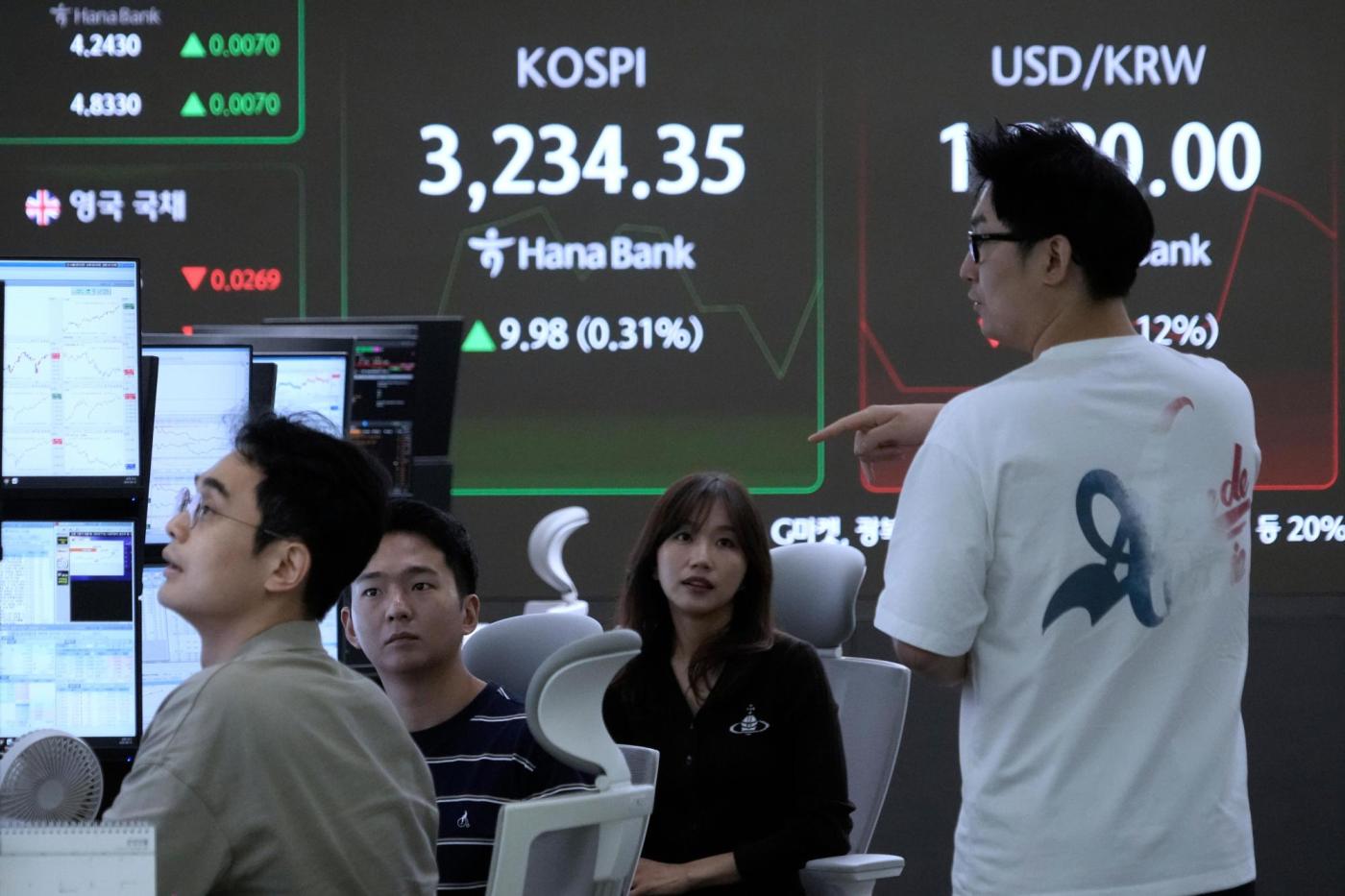Wall Street experienced a decline on Thursday following a disappointing report indicating that inflation at the wholesale level was higher than anticipated. The S&P 500 fell by 0.2% from its record high set the previous day, while the Dow Jones Industrial Average decreased by 104 points, or 0.2%, as of 9:35 a.m. Eastern time. The Nasdaq Composite also saw a minor reduction, slipping 0.1%.
The decline was driven by data released by the U.S. government, which revealed that wholesale prices increased by 3.3% in August compared to a year prior. This rate exceeded economists’ expectations of 2.5% and raised concerns about potential higher inflation for U.S. consumers as these costs trickle down through the economy.
This unexpected inflation data led traders to reconsider their previous consensus that the U.S. Federal Reserve would implement interest rate cuts at its next meeting in September. Lowering interest rates can stimulate economic growth by making borrowing cheaper for households and businesses, but it also carries the risk of exacerbating inflation.
Following the inflation report, traders assigned a 5% chance that the Federal Reserve may opt to maintain current rates during its upcoming meeting. Just a day before, there was a near certainty that the Fed would reduce its main rate for the first time this year. Chris Larkin, managing director of trading and investing at E-Trade, noted, “This doesn’t slam the door on a September rate cut, but it may raise a bit of doubt.”
Mixed Signals from the Labor Market
The disappointing inflation data contrasted sharply with an earlier positive report regarding consumer prices. Additionally, a separate update indicated that fewer U.S. workers applied for unemployment benefits last week, suggesting that layoffs remain relatively low. This development is encouraging for workers, particularly as job openings have become scarce.
However, a robust labor market may give the Federal Reserve less motivation to reduce interest rates in the near term. Consequently, the bond market reacted to the mixed signals, resulting in a rise in Treasury yields. The yield on the 10-year Treasury note increased to 4.26% from 4.20% just before the inflation report was released.
Corporate Impacts on Market Trends
On Wall Street, the luxury brand company Tapestry, known for its Coach and Kate Spade New York brands, contributed to the market downturn. The firm announced that tariffs and duties could impact its profitability by up to $160 million in the upcoming fiscal year. Despite reporting a stronger-than-expected profit for the latest quarter, its stock plummeted by 16.9% as its profit forecast fell short of analysts’ expectations.
Similarly, machinery manufacturer Deere saw its shares drop by 8%, even after exceeding profit expectations. The company adjusted its profit forecast downward, indicating a cautious outlook among its customers amid ongoing uncertainty in the market.
Internationally, stock indexes across Asia and Europe exhibited mixed performance as investors awaited a significant meeting between U.S. President Donald Trump and Russian President Vladimir Putin scheduled for Friday.
With the inflation report reshaping market expectations, traders will closely monitor upcoming economic data and the Federal Reserve’s policy decisions in the weeks ahead.





































































